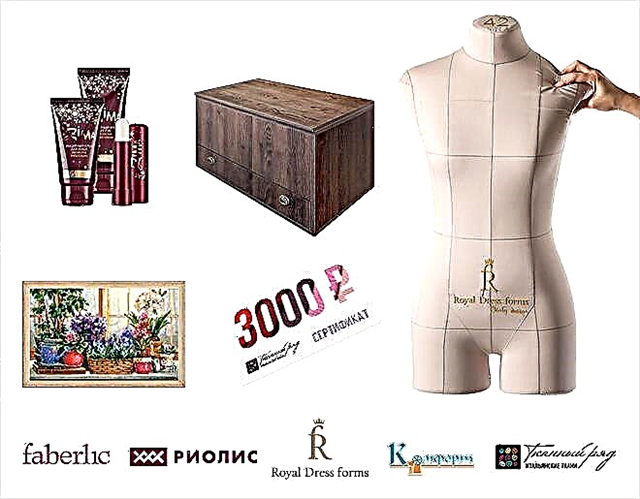Share
Pin
Tweet
Send
Share
Send
Without this invention, it is impossible to imagine everyday life. Today, zipper is not only a fastener for clothes. This is a decoration element of various accessories. And just an important trifle.
The first mention of lightning dates back to the mid-19th century. The name of the genius who invented "automatic continuous fastener" - Elijah Howe. But before it became necessary, convenient and popular, lightning went a long way. At first, the production was difficult, costly and unsuccessful - lightning turned out to be unreliable.First patent for"clasp for shoes" at the end of the 19th century he received an engineer-inventor, Whitcomb L. Judson. But even with the advent of the right technology, many continued to mistrust lightning. The invention was recognized thanks to the uniform of American soldiers of the First World War, which "sparkled with lightning": on flying overalls, uniform pockets, even on tarpaulin, which covered the aircraft - the Whitcomb Judson clasp was used everywhere. After the military, civilians recognized lightning.
The zipper has not been used in women's clothing for a long time. This was considered immoral, since the zipper could be easily unzipped. And only in 1930, Madame Chaparelle, the owner of the Paris Fashion House, decided on this desperate step. And women finally knew all the benefits of a zipper.
With the successful initiative of Madame Chaparel, the promotion of lightning began by designers, actors and even the Duke of Windsor.
In 1935 Elsa Schiaparelli, one of the great designers of the twentieth century, conducted an experiment with children's clothing and realized that lightning is an excellent replacement for crochet hooks, which are so difficult for young children to handle.
But a real breakthrough was made by a French fashion designer Jean Claude, which in 1937 placed a zipper on the width of men's trousers, which made a real sensation. She received her further popularity in 1953 after the film "Savage" withMarlon Brando.
You won’t surprise anyone with lightning today. Unless only a variety of species, decor and places of its application.
The zipper itself consists of two textile ribbons on which plastic and metal links are staggered. The connection and disconnection of the lightning is carried out using a lock (slider).
There are several main types of lightning:
• Spiral The clasp is made of spiral-wrapped synthetic fiber. These are ordinary trouser, skirt and dress zippers.
• Tractor The clasp consists of individual plastic cloves attached to the braid. These cloves have a characteristic “fungus” shape with a canvas that provides reliable grip. It is mainly used for outerwear.
• Metal the fastener on the device is similar to a tractor zipper, only its teeth are metal, most often asymmetric in shape (each tooth has a protrusion on one side and a recess on the other). Metal zipper is very durable. Most often used in jeans, bags, outerwear, serves as a decor element for various accessories.
In addition there hidden lightningwhose cloves are covered with braid and they are almost invisible in the product. Detachable andone-piece Zippers are most often used in children's clothes, accessories, outerwear, and also serve as an element of decor.
The most important thing in working with a zipper is the ability to sew it into the product correctly. If there is nothing to cover the sewn in zipper (lining, stitching, etc.), then its ends are turned to the wrong side of the product at an angle of 45 degrees and fixed manually. The lining will hide the whole zipper, and the hem or oblique inlay - only the ends.
If the product is sewn with a lining, then first they sew in a zipper, and then close it with a lining.
In multilayer products, so that, for example, the skirts of the dress are separated at the seams, the zipper is sewn as follows. Layers of skirts are connected only in the zipper area. The zipper is sewn into the seam of the upper skirt. The lining (second layer) is ground down to the cut mark under the fastener. Gently cut the allowances below the cut mark by 1-1.5 cm. Then sew open lining allowances to the allowances of the zipper manually or on a machine.
Decorative zipper is sewn on the front side of the product in two lines. The first goes along the edge of the braid, the second is close to the cloves of lightning. From the wrong side of the product, the allowances are tucked and seized with the second line (which goes close to the cloves), then the wrong side will turn out neat and beautiful.
If the sewn-in zipper in the middle seam of the back of the dress is heavily bristling, most likely the product has a long back, or the section of the seam is stretched. To fix this, you need to flip the zipper. Compare the length of the back to the waist of the product with the same measurement for the pattern. If there are differences, shorten the length of the back. If the measurement is correct, then you need to simulate the wave, and then catch the lightning again, slightly fitting the cut. For reliability, you can glue tissue sections under the zipper non-woven. The same problem can occur with zippers in the side seam. The reasons are the same - a section is stretched or there is excess width in the area where the lightning lies in the wave.
For products from knitwear and fabrics with elastane, allowances for lightning are glued with strips of non-woven fabric, then the fastener will lie flat.
The seam allowances of the lining for the zipper on the skirt are sewn up to the connection of the lining with the top of the product. And only then the lining is sewn to the skirt at the waist.
To embed a zipper into a fabric product in a cage, you can use the following method. Align the cage and sweep the seam where the lightning will be. Then attach the zipper to the seam allowances from the inside, pin with pins, sweep. Dissolve the seam and then sew in the zipper.
Secret zippers are sewn with the help of the foot for zippers (universal) or special - for secret zippers. So that the hidden zipper is not visible from the front side, the needle of the sewing machine should go into the clasp of the fastener close to the cloves. Start scribbling slightly bending the zipper teeth, then the line will lie close to them.
If the length of the zipper is longer than necessary, it can be shortened. Measure the desired length, add about 4 cm to it and cut off excess from the bottom. On these 4 cm, the teeth are removed and the fastening is done with threads. You can shorten the zipper and on top - cut off the extra length, remove the cloves. The first method is preferable, as it allows you to maintain the aesthetics of the fastener.
From personal experience: so that the line at the beginning of the stitching of the zipper "does not move out", and the cloves do not curl, I always smooth the upper edges of the hidden zipper (about 2 cm from the top edge). Before stitching, first lower the needle into the braid of lightning and only then press the pedal. Just in case, I decorate the zipper - lightly iron it with an iron so that there is no surprise after washing the product.
To learn how to properly and beautifully sew zippers into products that you create, take a look video tutorial "Secret Lightning". Also get to knowworkshops burdastyle.ru. And then you will no longer have problems when performing this sewing operation.
The article was prepared on the basis of materials forum"Sewing Wisdom".
We thank all the forum participants who shared their secrets and experiences. Special thanks to Ale (aliy - moderator of the technical forum) and Svetlana Khatskevich (moderator of the site burdastyle.ru) for the information provided.
Photo: burdastyle.ru
Material prepared by Julia Dekanova
Share
Pin
Tweet
Send
Share
Send



